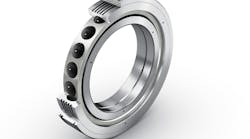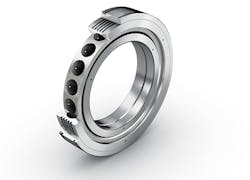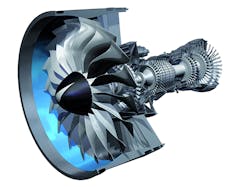Aircraft Ball Bearing Achieves 4 Million Millimeters Per Minute
A new ball bearing exceeds performance limits for high-speed bearing supports in aircraft-engine main shafts. Developed by FAG Aerospace, a Schaeffler Group member, the bearing reached a record speed of four million millimeters per minute in a simulated flight cycle on a Schaeffler test stand, and 2.4 million millimeters per minute in the initial phase during takeoff.
The new bearing is expected to reduce fuel consumption of passenger aircraft by up to 200,000 tons each year. It falls in line with the push for greater aircraft-engine efficiency over the next two decades, as environmental and climate-protection legislation imposes stricter engine requirements and constraints.
The new aircraft-engine bearing integrates oil damping of vibrational loads, and uses “Duplex-hardened” raceways to decrease wear and reduce rolling contact loads. Ceramic balls and direct cooling of the outer ring reduces friction and weight.
The main-shaft bearing was designed in a collaborative project called “Effective Oil System,” conducted by the Aviation Research Program (LuFo) and funded by the Federal Ministry for Economic Affairs and Energy. Demonstrating high thermal and mechanical efficiency, it uses the same cooling-oil quantities as regular bearings to reach speeds that are almost 70% higher. The bearing can also be adjusted so that it doesn’t exceed a maximum ring temperature.


